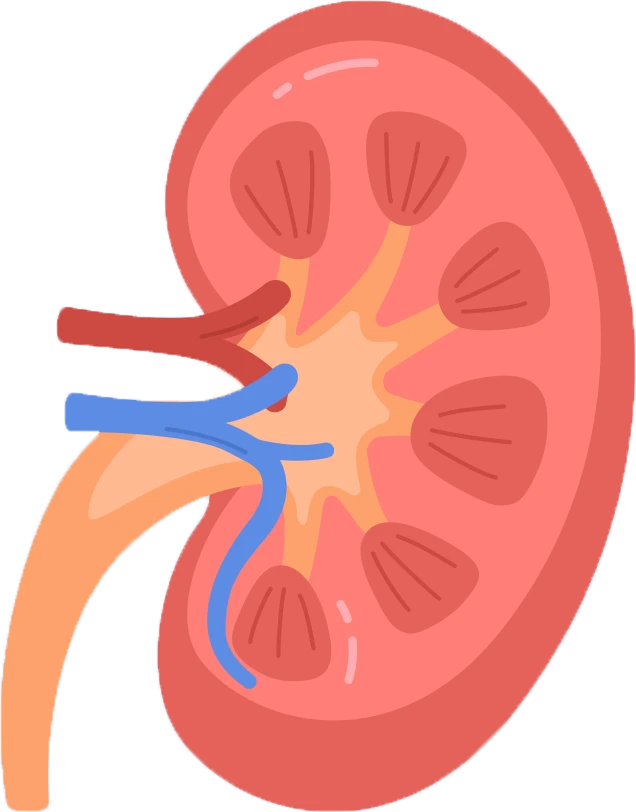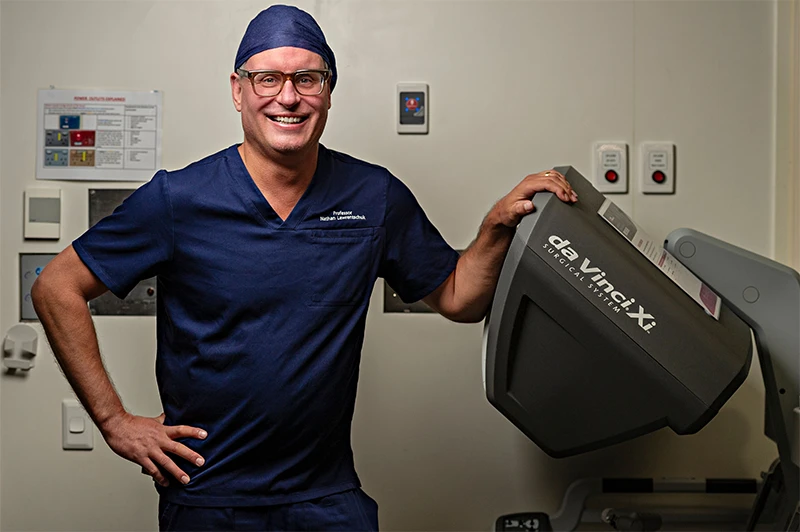Robotic-assisted laparoscopic pyeloplasty (RALP) is a minimally invasive surgery to treat a blockage or narrowing in the ureter (the tube that connects your kidney to your bladder) which is known as a ureteropelvic junction (UPJ) obstruction.
What does ‘robotic’ mean?
The procedure involves using robotic surgical tools to remove the narrowed segment and reconstruct the drainage pathway. The da Vinci robotic system that Prof Lawrentschuk enhances precision and control while minimising the size of incisions.

The UPJ
The UPJ is the area where the kidney connects to the ureter (the tube that carries urine down to the bladder). Sometimes, this can become blocked and cause an obstruction.
Why do I need a RALP?
There are several causes for UPJ blockages including kidney stones, scar tissue, or infections. Patients with a UPJ obstruction usually have the following symptoms:
- Pain in your back, sides and stomach area
- Blood in your urine
- Recurrent kidney infections
If you are experiencing these symptoms, Prof Lawrentschuk will then order an ultrasound to determine whether you have a UPJ obstruction.
Before your procedure
You will be contacted 1–2 weeks prior to your scheduled procedure with specific fasting instructions and hospital admission details. You will also receive a link to complete your online admission forms.
It is important to advise the rooms if you are taking any blood thinners or any prescribed medications for diabetes or weight loss purposes. The rooms can be contacted on 9329 1197
Following your procedure
Hospital stay
You will be admitted on the day of your surgery, with a typical hospital stay lasting 1–3 nights. Post- operatively, you may have:
- A urinary catheter is placed to drain the bladder and is removed once you are mobile and passing urine normally.
- A small surgical drain may also be present for 24–48 hours.
You will be given instructions on managing your stent and what to expect as you recover at home.
Recovering at home
Once at home, you may experience mild discomfort. However, this can be managed with simple painkillers. You can expect to return to light activities within 1-2 weeks but please keep in mind that full recovery usually takes 10-14 days.
Prof Lawrentschuk recommends avoiding strenuous exercise or heavy lifting for at least 4–6 weeks following the procedure.
Possible complications
Shoulder tip pain
Very common
Pain or irritation from the stent
Very common
Infection, bloating or hernia at port site
1 in 10 - 1 in 50
Ongoing pain despite good drainage
1 in 10 - 1 in 50
Recurrence of the blockage requiring further surgery
1 in 10 - 1 in 50
Bleeding requiring transfusion or conversion to open surgery
1 in 50 - 1 in 250
Injury to nearby structures (eg. bowel, blood vessels)
1 in 50 - 1 in 250
Kidney loss from recurrent damage
1 in 50 - 1 in 250
Cardiovascular complications (eg. clot, stroke or heart event)
1 in 50 - 1 in 250
When to seek help
Please contact Professor Lawrentschuk’s rooms at 9329 1197 or attend your nearest Emergency Department if you experience:
- High fever, chills, or shaking
- Increased pain, redness, throbbing or discharge from incisions
- Blood in the urine that does not resolve with increased hydration
Follow-up and monitoring
A follow-up appointment will be scheduled 6-8 weeks post-surgery to review your recovery and discuss the next steps in management. Prof Lawrentschuk may also wish for additional imaging (such as an ultrasound) to be completed to ensure that the obstruction has resolved.
If you have any queries, please use the contact details below:
MONDAY to FRDAY 8:30AM–4:00PM
Call the rooms at 9329 1197
AFTER HOURS
Contact Epworth Emergency on 03 9426 6666 or Royal Melbourne Emergency on 03 9342 7000.
You can also page Prof Lawrentschuk on 03 9387 1000.
For appointments and enquiries:
CONSULTING LOCATIONS


